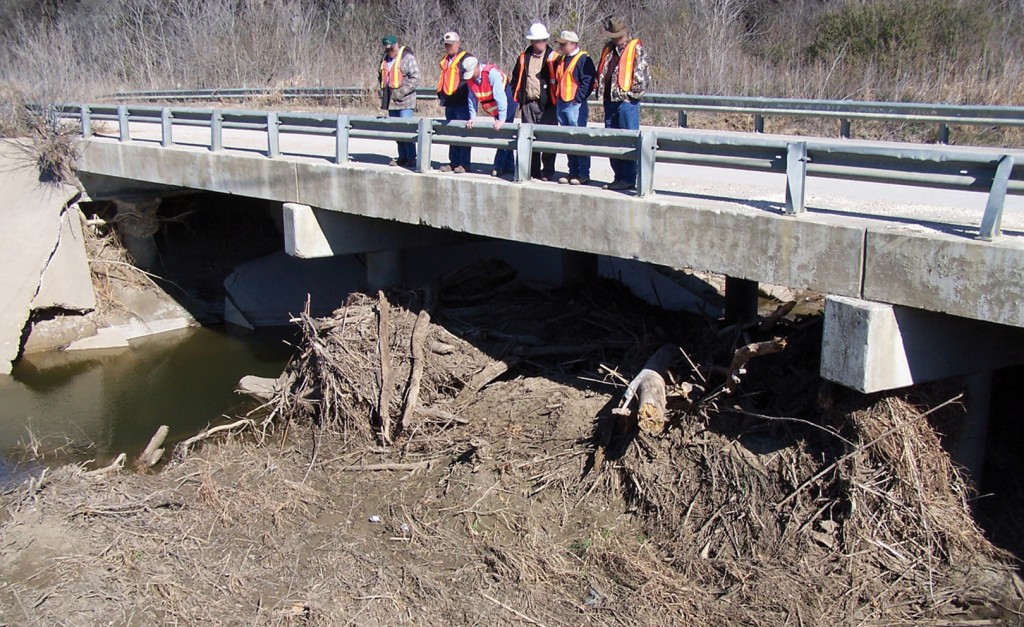By Ralph K. Banks, P.E.
Lone Star LTAP, TEEX Adjunct Instructor
A frequent problem for stream-crossing bridges is the lodging and buildup of streamflow drift against the bridge substructure interior supports and/or abutments. This drift is also referred to by some as “debris.” Either term, as used in bridge maintenance, usually describes any floating or submerged materials that are transported by flowing water. This may include sediment, tree limbs, logs and other vegetation, as well as trash and other man-made cast-off materials.
The presence of this drift can cause several problems for the bridge owner and for bridge users. First, drift combined with heavy streamflow can produce lateral loading (push and/or pull) on the substructure. Sometimes this lateral loading reaches the point of bridge collapse, since substructures are usually designed primarily to withstand vertical loads as opposed to lateral loads.
Second, the presence of the drift can be a fire hazard, especially during the extended hot, dry weather that much of our state has experienced in recent years. The fire hazard is obvious if the substructures are made of timber, which is still the case for many of our local city and county bridges.

However, even substructures made of concrete or steel can be damaged severely by the high and intense heat that can result from burning drift. Steel members in tension subjected to intense heat will permanently elongate. Those in compression will buckle, and in buckling will permanently sag downward. Concrete members exposed to intense heat will exhibit strength reduction, cracking and spalling.
Third, and very important, the presence of an accumulation of drift can redirect streamflow to other parts of the channel cross-section, with the inevitable increase of flow velocity along the redirected path. This increased flow velocity can cause scour (loss of soil material by streamflow action) and erosion around other interior support or abutment foundations. This scour and erosion can cause structural weakening and eventual damage, to include the possibility of structure collapse. Such scouring next to abutments can not only cause structural damage to the abutment, but damage will likely also occur to the abutment and approach slope protection.
Once started, drift buildup is likely to grow quite rapidly. So, as a prominent item of routine bridge maintenance, accumulations of drift should be located and scheduled for prompt removal.



